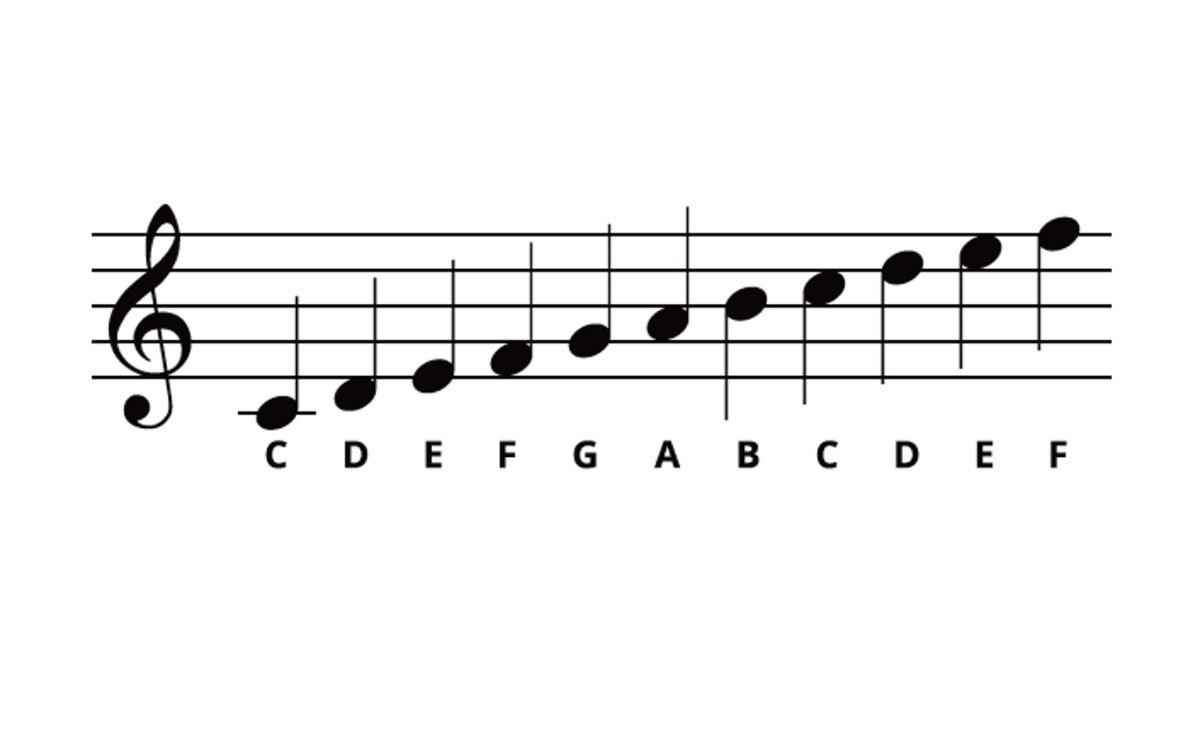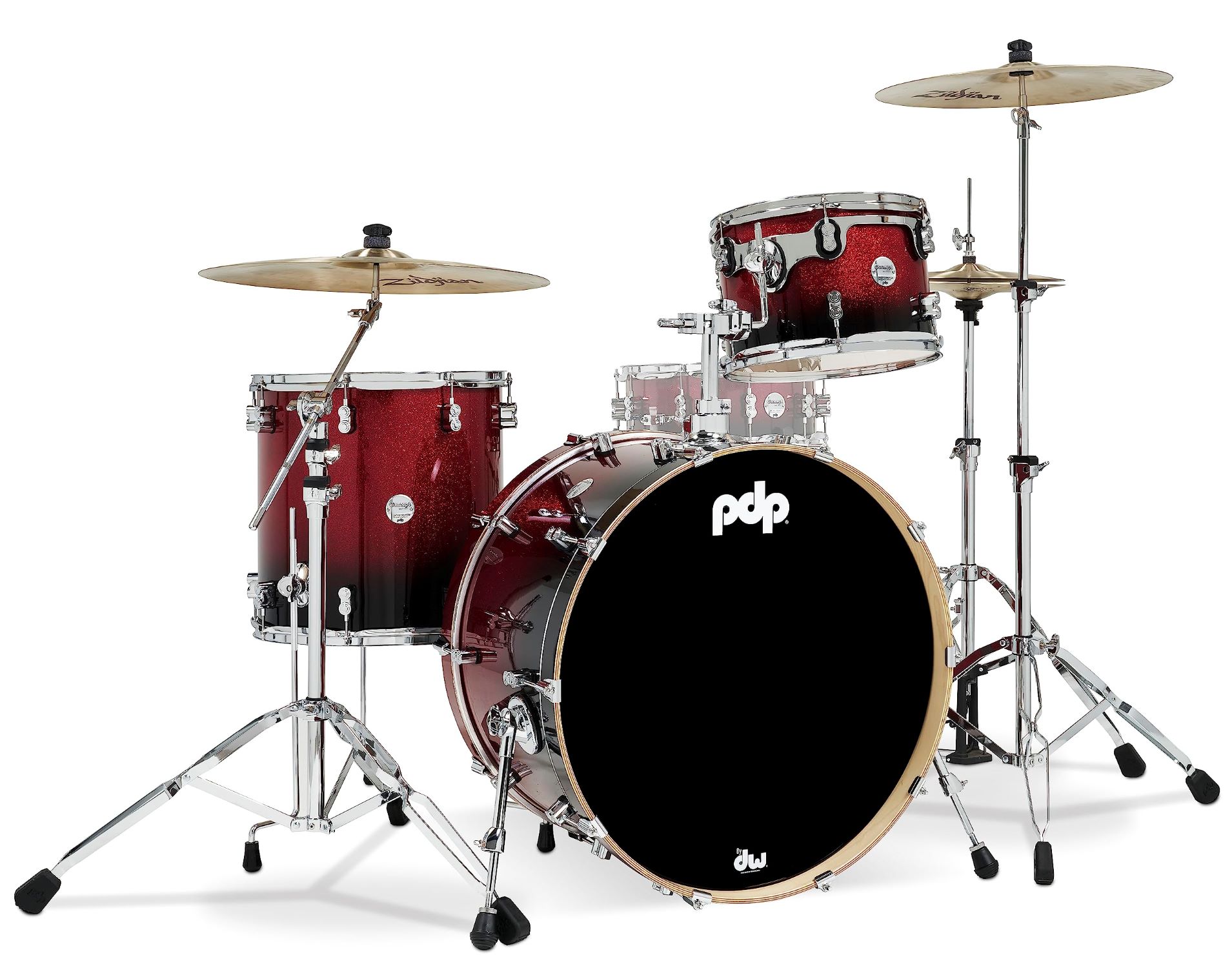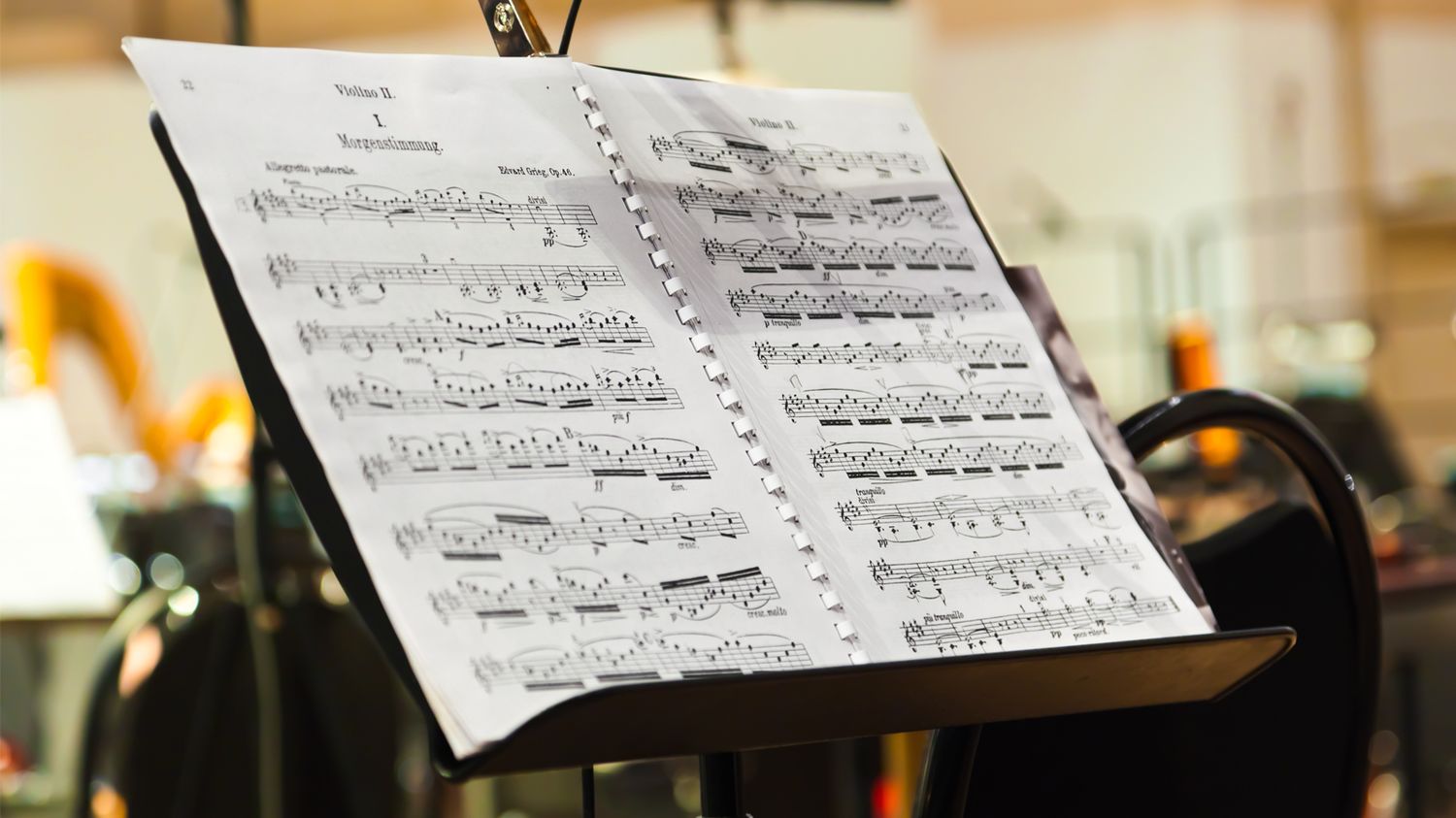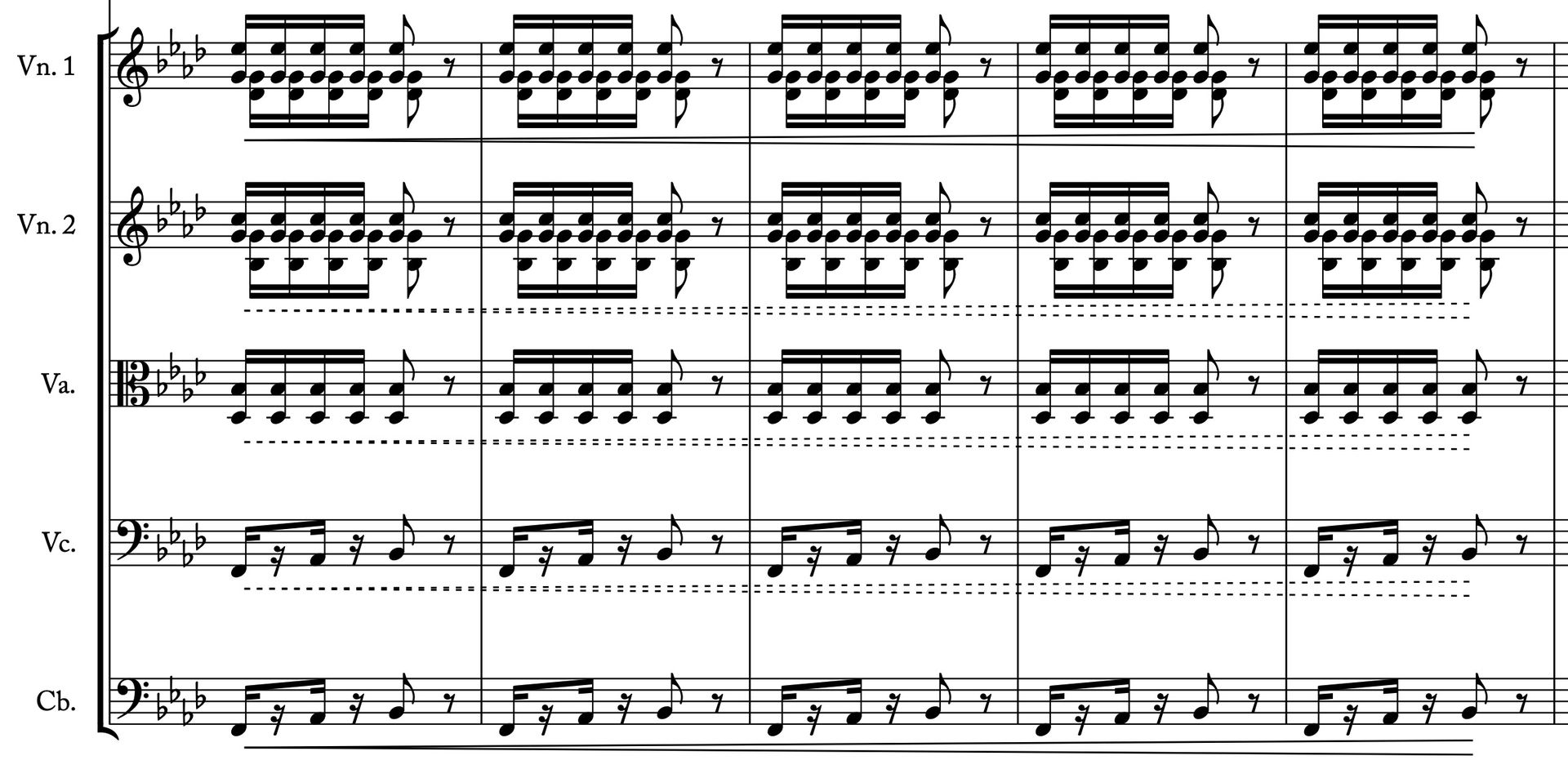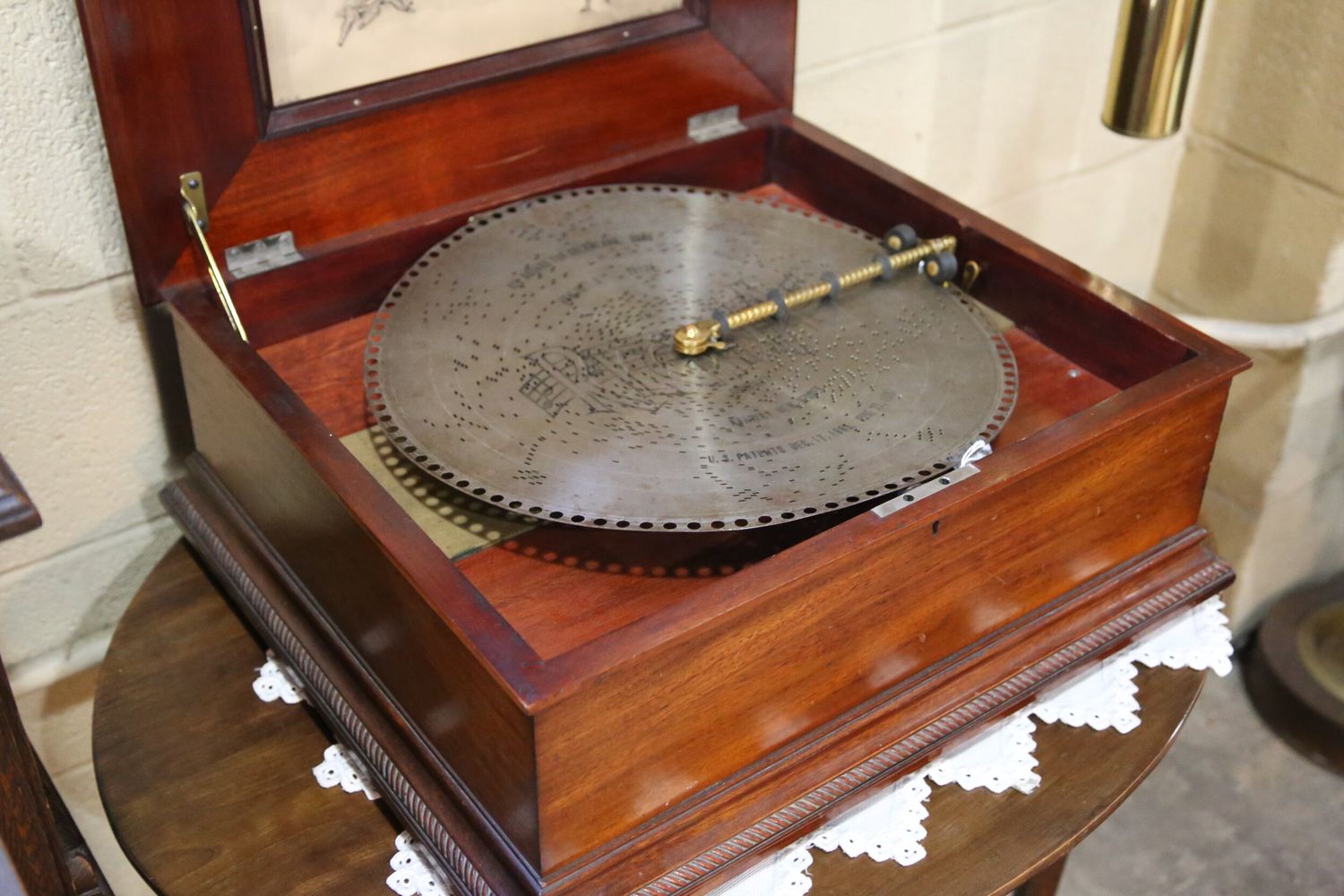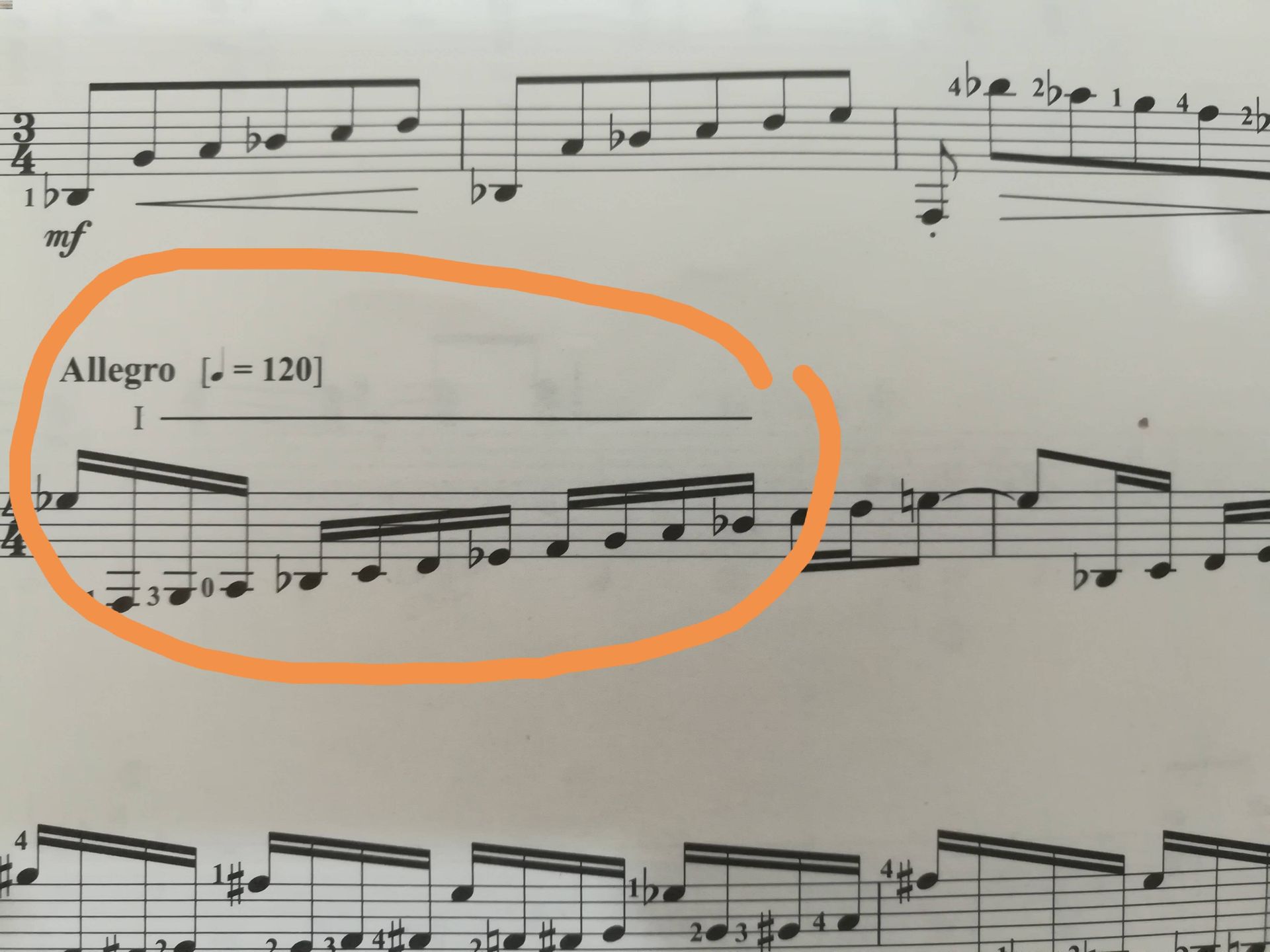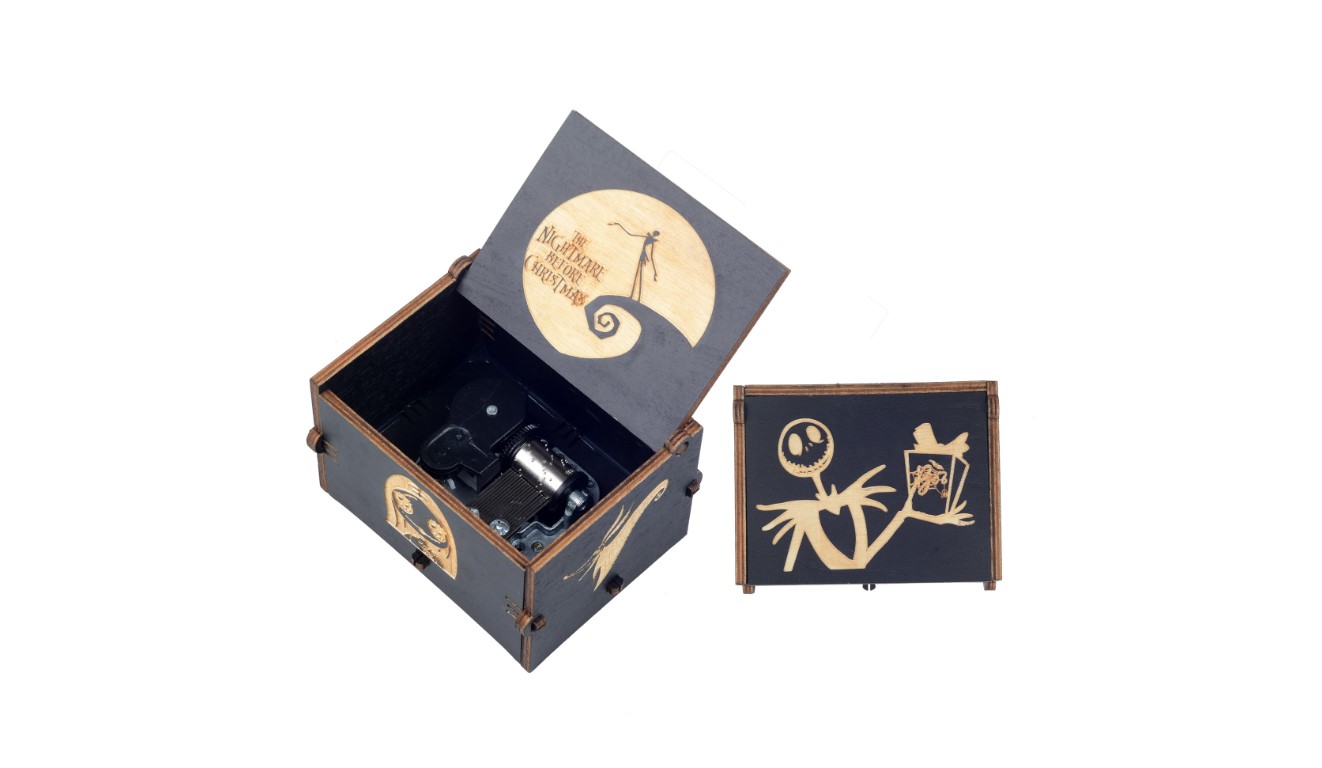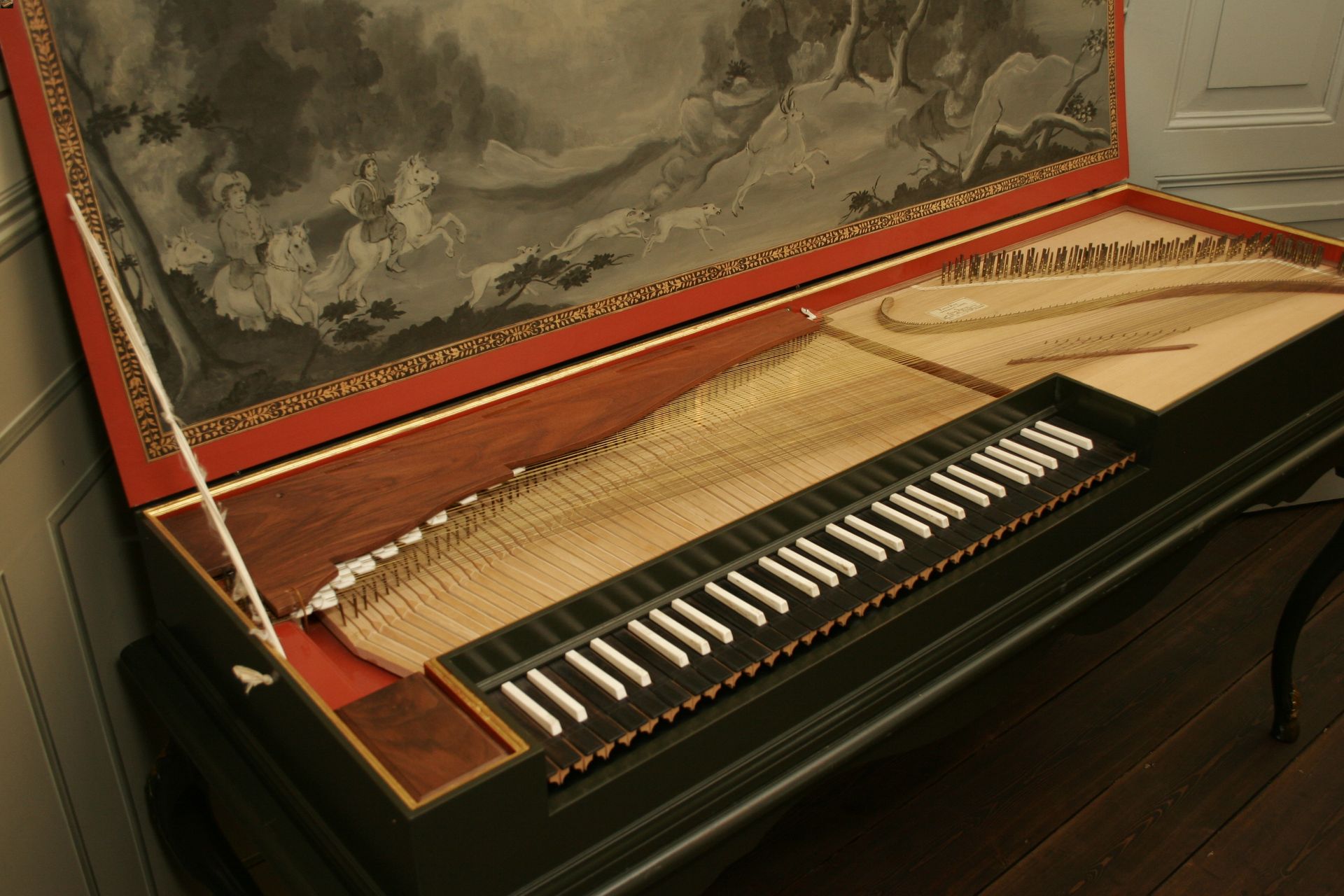Home>Production & Technology>Sheet Music>What Are The Lines Called On Sheet Music


Sheet Music
What Are The Lines Called On Sheet Music
Modified: January 22, 2024
Discover the significance of sheet music lines and their role in reading and interpreting musical compositions. Explore the different types of lines found on sheet music and learn how to navigate them effectively.
(Many of the links in this article redirect to a specific reviewed product. Your purchase of these products through affiliate links helps to generate commission for AudioLover.com, at no extra cost. Learn more)
Table of Contents
Introduction
Sheet music is a fundamental tool used by musicians to read and interpret musical compositions. It consists of a series of notations, symbols, and lines that convey specific instructions on how to perform a musical piece. One of the key components of sheet music is the lines that are present throughout the score.
These lines play a crucial role in visually organizing the musical notes, rhythms, and other symbols present in the sheet music. They provide a framework for musicians to effectively read and interpret the composer’s intentions. Understanding the purpose and significance of these lines is essential for any aspiring musician or music enthusiast.
In this article, we will explore the various lines that are commonly found on sheet music. We will delve into their functions, meanings, and how they contribute to the overall understanding and performance of a musical composition. Whether you are a beginner musician or a seasoned professional, this article will shed light on the importance of these lines and deepen your appreciation for the intricacies of sheet music.
So, let’s dive into the world of sheet music lines and uncover the secrets they hold!
Definition of Sheet Music
Sheet music is a written or printed form of musical notation that represents a specific musical composition. It serves as a guide for musicians to accurately perform the music, conveying important information about the pitch, rhythm, dynamics, and structure of the piece. Sheet music is typically composed of several components, including notes, symbols, and lines.
The primary purpose of sheet music is to provide a standardized way of communicating music between composer and performer. It allows musicians to accurately reproduce a musical composition, ensuring consistency and accuracy in the performance. Sheet music is used across various genres and styles of music, from classical and jazz to rock and pop.
Sheet music can be written for a single instrument or a combination of instruments, ranging from solo piano pieces to full orchestral scores. It can also include the lyrics of a song, making it a valuable resource for vocalists. Additionally, sheet music may contain annotations, markings, and performance instructions to assist musicians in interpreting the music.
In modern times, sheet music is commonly printed and distributed in physical or digital formats. It can be found in music stores, online platforms, and digital music libraries. With the advancement of technology, digital sheet music has gained popularity, allowing musicians to access and download sheet music instantly.
Sheet music is an essential tool for musicians of all levels, from beginners to professionals. It enables musicians to learn new repertoire, refine their performance skills, and collaborate with other musicians. Whether studying a classical masterpiece or playing a contemporary hit, sheet music provides the foundation for musical interpretation and expression.
Now that we have defined sheet music, let’s explore the significance of the lines that are present within it.
Importance of Lines on Sheet Music
The lines on sheet music serve a vital role in visually organizing the musical information and providing a clear framework for musicians to read and interpret the composition. They play a crucial role in conveying important musical elements such as pitch, duration, and structure. Here are some of the key reasons why lines on sheet music are important:
- Organization of Notes: The lines on sheet music form a staff, which consists of horizontal lines and spaces. These lines and spaces represent specific pitches, aligning the musical notes in a logical and organized manner. By visually separating the notes, the lines help musicians identify the pitch of each note quickly and accurately.
- Differentiation of Pitch: The lines on the staff provide a reference point for determining the pitch of the notes. When a note is placed on a line, it represents a different pitch compared to when it is placed in the spaces between the lines. This clear distinction allows musicians to identify the pitch of each note at a glance.
- Indication of Rhythmic Values: The lines on sheet music are also crucial in indicating the duration of the notes. Based on their position on the staff, notes can be identified as whole notes, half notes, quarter notes, eighth notes, and so on. The lines and spaces provide a visual guide to accurately interpret the rhythm of the piece.
- Representation of Musical Phrases: By dividing the music into measures and using specific lines called bar lines, sheet music represents musical phrases and helps musicians navigate through the composition. Bar lines indicate the beginning and end of each measure, guiding musicians in maintaining a consistent tempo and understanding the structure of the music.
- Extension Beyond the Staff: The lines on sheet music can also extend beyond the staff through the use of additional lines called ledger lines. Ledger lines allow for the representation of notes that are outside the normal range of the staff, both in the higher and lower register. They ensure that no notes are excluded from the composition, expanding the musical possibilities for performers.
These are just a few examples of the importance of lines on sheet music. Whether through the organization of notes, differentiation of pitch, representation of rhythm, indication of musical phrases, or extension beyond the staff, the lines on sheet music provide essential visual cues to enhance musicians’ understanding and performance of a musical composition. They are an integral part of the language of music, enabling musicians to bring the notes on the page to life.
Staff Lines
The staff lines on sheet music form the foundation of musical notation. They consist of a set of horizontal lines and spaces that represent different pitches. The staff lines provide a visual reference for musicians to identify the pitch of each note and navigate through the composition. Here is a closer look at the significance of staff lines:
Organization of Pitch: The staff lines divide the musical notes into specific positions, indicating different pitches. Each line and space represents a specific pitch, allowing musicians to easily identify and play the correct notes. The vertical placement of the notes on the staff lines determines their pitch, with lower-pitched notes located at the bottom and higher-pitched notes located at the top.
Use of Clefs: Clefs are symbols placed at the beginning of the staff lines to indicate the range and pitch of the notes. The most common clefs used are the treble clef (G clef) and the bass clef (F clef). The treble clef is typically used for higher-pitched instruments and voices, while the bass clef is used for lower-pitched instruments and voices. Clefs further aid musicians in identifying the appropriate pitches within the staff lines.
Indication of Note Duration: The staff lines are also used to indicate the duration of the musical notes. By positioning the notes on the staff lines or in the spaces between them, musicians can determine the length of each note. For example, notes placed on a line or in a space represent different durations, such as whole notes, half notes, quarter notes, and so on. The staff lines provide a visual representation of these rhythmic values, contributing to the accurate interpretation and performance of the music.
Representation of Multiple Voices: In music that involves multiple voices or instruments, staff lines are stacked vertically to accommodate the different parts. Each part occupies its own set of staff lines, aligning all the voices or instruments together. This vertical arrangement helps musicians to differentiate between the various voices or instruments and understand how they interact within the composition.
The staff lines form the foundation of sheet music, providing a structured system for representing pitch, duration, and multiple voices. They enable musicians to navigate through the music and accurately perform the intended pitches and rhythms. Without staff lines, sheet music would be chaotic and unclear. The organization and clarity provided by the staff lines are essential for musicians in understanding and bringing life to the music they are playing.
Ledger Lines
Ledger lines are additional lines that extend beyond the staff lines, both above and below, to represent notes that are outside the normal range of the staff. They are used when the notes fall above or below the lines and spaces of the staff, preventing the need for excessive ledger lines and maintaining the readability of the sheet music. Here is a closer look at the importance of ledger lines:
Extension of Pitch Range: Ledger lines allow for the representation of notes that exceed the range of the staff. When a note falls above the highest line of the staff or below the lowest line, ledger lines are used to demonstrate the pitch of the note. This ensures that no notes are excluded from the musical composition, offering a full representation of the intended melody or harmony.
Visual Clarity: By utilizing ledger lines, the visual clarity of the sheet music is maintained. Instead of adding multiple lines within the staff for notes that are significantly higher or lower, ledger lines are employed to extend the staff’s pitch range without cluttering the notation. This keeps the sheet music organized and easy to read, allowing musicians to quickly identify and perform the correct pitches.
Identification of Note Placement: Ledger lines assist in indicating the precise placement of notes that fall outside the staff. The use of these lines helps musicians accurately determine the pitch of these notes, avoiding any confusion or ambiguity. By clearly indicating the additional notes above or below the staff, ledger lines contribute to a more precise and efficient reading of the sheet music.
Transitional Tool: Ledger lines are a transitional element that helps musicians move between the staff and the notes that fall beyond its range. They serve as connection points, providing a smooth transition between the staff lines and the higher or lower notes. This allows musicians to navigate seamlessly through the music, maintaining a steady flow and providing a complete representation of the composition.
Overall, ledger lines are essential in sheet music as they allow for the inclusion of notes that extend beyond the range of the staff. They ensure the accuracy and readability of the musical notation, providing a clear representation of the pitch and placement of these additional notes. Ledger lines enable musicians to perform compositions that encompass a broader range and express the intended musical ideas faithfully.
Bar Lines
Bar lines are vertical lines that appear on sheet music and are used to divide the music into measures or bars. These lines play a crucial role in organizing the rhythmic structure of the composition and guiding musicians in maintaining a consistent tempo. Let’s explore the importance of bar lines:
Division of Measures: Bar lines act as visual markers that divide the music into measures or bars. Measures are small sections of music that contain a specific number of beats, indicated by the time signature. By dividing the music into measures, bar lines assist musicians in understanding the rhythmic structure and phrasing of the piece. Each measure represents a complete rhythmic unit, making it easier for musicians to read and interpret the music accurately.
Indication of Time Signature: Bar lines also help establish and maintain the correct time signature of the music. The time signature indicates the number of beats in each measure and the value of each beat. The presence of bar lines ensures that musicians can easily identify the beginning of each measure, allowing them to count and keep track of the beats as they perform the piece.
Visual Clarity: Bar lines enhance the visual clarity of the sheet music, making it easier for musicians to read and comprehend the music. By visually segmenting the composition into measures, bar lines provide a clear structure and organization. This clarity enables musicians to analyze the music, identify patterns, and effectively navigate through the piece with accuracy and precision.
Repetition and Structure: Bar lines are instrumental in indicating repeat sections in a piece of music. They can be used to mark the beginning and end of repeated sections, such as chorus or verse. This notation allows musicians to navigate through the music efficiently when there are repeated sections. Bar lines also contribute to the overall structure of the composition, helping musicians understand the sequence and flow of the music as intended by the composer.
Enforcement of Tempo: Bar lines assist in maintaining a consistent tempo throughout the music. By dividing the composition into measures, bar lines ensure that musicians play each measure within a specific timeframe. This reinforces the rhythmic accuracy and synchronicity among performers, facilitating a cohesive and well-coordinated performance.
In summary, bar lines are vital elements in sheet music, serving as visual markers that divide the music into measures and provide a framework for rhythmic organization. They aid musicians in understanding the time signature, maintaining a consistent tempo, and effectively interpreting the structure of the composition. Bar lines contribute to the overall readability and clarity of sheet music, enhancing the musician’s ability to accurately perform the musical piece.
Double Bar Lines
Double bar lines are vertical lines that appear on sheet music and signify the end of a section or the completion of a piece. These lines play a crucial role in guiding musicians and providing a clear structural division within the music. Let’s explore the importance of double bar lines:
Sectional Division: Double bar lines are used to mark the end of a section within a musical composition. They indicate a clear break in the music, separating different parts or themes. This helps musicians identify distinct sections, such as verses, choruses, or bridge passages. The presence of double bar lines assists in organizing the music and provides a visual marker for musicians to navigate through the structure of the piece effectively.
Transitional Point: Double bar lines serve as transitional points, indicating shifts in tempo, dynamics, or mood. They can mark a change in key signature, time signature, or instrumental accompaniment. By visually signaling these transitions, double bar lines help musicians prepare for upcoming changes and adapt their performance accordingly. They provide a visual cue for musicians to anticipate and prepare for any musical alterations or shifts in the composition.
Clear Breaks: Double bar lines contribute to the readability of the sheet music by providing visual breaks in the music. These breaks give musicians clarity when reading the score, helping them identify and follow the musical phrases without confusion or ambiguity. Double bar lines assist in maintaining a clear and organized presentation of the music, facilitating accurate interpretation and performance.
Completion of a Piece: In many instances, double bar lines indicate the completion of a musical piece. Whether it is the end of a song, a movement within a larger work, or a standalone composition, double bar lines serve as a clear indication that the piece has concluded. This distinction is especially important for performers in live settings or studio recordings, as it signals the appropriate time to conclude their performance.
Enhanced Structural Understanding: Double bar lines contribute to a musician’s understanding of the overall structure of the music. By visually marking the end of each section or movement, they help musicians grasp the larger form and navigate through the piece with greater awareness. This understanding aids in the interpretation of the composer’s intentions and allows musicians to convey the appropriate musical expression and emotion.
In summary, double bar lines are essential elements in sheet music that serve as structural markers and aid musicians in understanding the organization and flow of the music. They indicate sectional divisions, provide transitional points, and enhance the readability of the sheet music. Double bar lines play a vital role in guiding musicians, marking the completion of a piece, and facilitating a cohesive and well-structured performance of the music.
Repeat Signs
Repeat signs are symbols used in sheet music to indicate sections of music that should be repeated. They provide a convenient and efficient way for musicians to navigate through repeated sections without having to duplicate the notation. Repeat signs offer several important benefits in sheet music notation and performance. Here’s a closer look at the significance of repeat signs:
Indication of Repetition: Repeat signs clearly mark sections of music that should be played again. These signs typically consist of two dots placed vertically before and after a section of music. They act as visual cues for musicians, reminding them to go back and repeat the music from a specific point. This allows for efficient rehearsal and performance, ensuring that repeated sections are accurately reproduced.
Conserving Space: Repeat signs help conserve space on the sheet music by eliminating the need to write out the repeated section multiple times. Instead, the repeat signs allow musicians to quickly identify and repeat the specified section. This is particularly useful for longer compositions or pieces with multiple repeated sections, as it saves time and reduces the clutter on the page.
Economical Practice: Repeat signs facilitate economical practice sessions, allowing musicians to focus on specific sections that require more attention. Instead of repeating an entire piece, musicians can isolate the sections marked by the repeat signs for targeted practice. This efficiency enables efficient use of practice time and helps musicians improve their performance in a more focused manner.
Creating Musical Form: Repeat signs play a crucial role in shaping the musical form and structure. By indicating repeated sections, they contribute to the overall organization and coherence of the composition. Repeat signs enable listeners to recognize recurring themes or melodies, which can enhance their engagement and understanding of the music’s structure.
Interpretive Flexibility: Repeat signs give musicians interpretive flexibility by allowing variations in the repeated sections. Musicians can choose to add embellishments, improvisations, or variations during the repeated sections, providing a sense of freshness and creativity in their performance. Repeat signs thus encourage artistic interpretation and personal expression within the framework of the composition.
Repeat signs are valuable tools in sheet music notation, providing clear indications for repeated sections and facilitating efficient practice and performance. They save space, maintain musical form, and allow for interpretive flexibility. Musicians rely on these symbols to navigate through repeats, resulting in cohesive and well-structured performances that faithfully represent the composer’s intentions.
Time Signature
The time signature is a fundamental notation element in sheet music that indicates the meter and rhythmic structure of a musical composition. It consists of two numbers positioned at the beginning of each staff or after a double bar line. The time signature provides essential information to musicians, guiding them in maintaining a consistent tempo and understanding the rhythmic organization of the piece. Let’s explore the significance of the time signature:
Meter and Beat: The top number of the time signature represents the number of beats in each measure, while the bottom number denotes the value of each beat. For example, in a 4/4 time signature, commonly referred to as “common time,” there are four beats per measure with a quarter note receiving one beat. The time signature establishes the rhythmic foundation for the entire composition, ensuring a consistent pulse and beat throughout.
Rhythmic Interpretation: The time signature guides musicians in interpreting the rhythm of the music. The combination of the top and bottom numbers determines the duration and emphasis of each beat. Different time signatures create distinct rhythmic patterns, providing musicians with vital information on note values and subdivisions. Musicians rely on the time signature to accurately perform the rhythm and maintain synchronization with other performers.
Organization of Measures: The time signature divides the music into measures, also known as bars. Each measure represents a group of beats that creates a musical phrase or segment. The time signature allows musicians to identify the beginning and end of each measure, maintaining a clear structural framework. This organization ensures a logical and coherent flow throughout the composition.
Tempo and Playing Style: The time signature can also provide clues about the intended tempo and playing style of the music. Certain time signatures, such as 2/4 or 6/8, suggest a faster tempo and a more energetic feel, while others, like 3/4 or 6/4, indicate a slower tempo and a more relaxed mood. Musicians consider the time signature when determining the appropriate speed and overall character of their performance.
Changes in Time Signature: In some compositions, the time signature may change throughout the piece, indicating a shift in the rhythmic structure or meter. These changes can add complexity and variety to the music, requiring musicians to adapt and adjust their playing accordingly. The transition from one time signature to another may denote a new section, a shifting mood, or a change in musical emphasis.
In summary, the time signature is a critical element in sheet music notation that provides important information on the meter, rhythm, and structure of a musical composition. It guides musicians in understanding the beats and subdivisions, maintaining a consistent tempo, and interpreting the rhythmic nuances of the music. By incorporating the time signature in their performance, musicians can faithfully represent the composer’s rhythmic intentions and deliver a cohesive and engaging musical experience.
Clef
The clef is a symbol used in sheet music to indicate the pitch range of the written notes. It is placed at the beginning of the staff and serves as a reference point for musicians to identify and interpret the pitches represented in the notation. There are several types of clefs, with the most common ones being the treble clef, bass clef, and alto clef. Let’s explore the significance of the clef:
Pitch Identification: The primary purpose of the clef is to identify the pitch of the written notes. Each clef corresponds to a specific range of pitches, indicating the position of middle C on the staff and providing a reference point for all other notes. The treble clef is used for higher-pitched instruments and voices, while the bass clef is used for lower-pitched instruments and voices. Alto and tenor clefs are used for specific instruments or vocal ranges. The clef ensures that musicians can accurately identify and perform the intended pitches within the staff.
Position of Middle C: The clef also establishes the position of middle C on the staff, which is an important reference point between the treble and bass clefs. For example, in the treble clef, middle C is located on the first ledger line below the staff. Understanding the position of middle C is crucial for musicians to navigate between the different clefs and correctly interpret the music that spans across multiple staffs.
Transposition: Clefs play a significant role in transposing music. Transposition involves shifting a piece of music to a different key while maintaining the same intervals between notes. By changing the clef, the entire pitch range is transposed, making it easier for musicians to read and perform music in differing keys. Clefs allow musicians to adapt and perform music in different registers without needing to rewrite the entire score.
Instrument-Specific Notation: Different instruments have their own preferred clefs. For instance, the treble clef is commonly used for instruments like the violin, flute, and voice, while the bass clef is used for instruments such as the cello, tuba, and double bass. Clefs ensure that notation is specific and appropriate for the instruments they are intended for, making it easier for musicians to read and play their respective parts.
Identification of Voice Ranges: In vocal music, the use of specific clefs helps identify the different voice ranges. For example, the treble clef is often used for sopranos and altos, while the bass clef is used for tenors and basses. Clefs provide clarity in vocal notation, ensuring that each voice range is appropriately represented and distinguishable within a choral or vocal ensemble.
In summary, the clef is a crucial element in sheet music that indicates the pitch range of the written notes. It helps musicians identify and interpret the intended pitches, establish the position of middle C, and facilitate transposition and instrument-specific notation. Clefs play a vital role in making sheet music accessible, ensuring that musicians can accurately perform their respective parts and contribute to a well-coordinated and harmonious musical performance.
Key Signature
The key signature is a notation element in sheet music that indicates the key in which a composition is written. It appears at the beginning of each staff, after the clef and before the time signature. The key signature provides critical information to musicians about the tonality and the presence of accidentals throughout the piece. Understanding the key signature is essential for interpreting the correct pitches and maintaining the intended harmonic structure. Let’s explore the significance of the key signature:
Tonality and Scale: The key signature establishes the tonal center of a musical composition. It indicates the specific scale, such as major or minor, on which the piece is based. By showing the sharps or flats consistently placed on certain lines or spaces, the key signature provides a visual representation of the scale’s structure. Musicians rely on the key signature to accurately perform the pitches within the designated scale, following the specific pattern of accidentals.
Pitch Alteration: The key signature determines the presence of accidentals throughout the piece. Accidentals are sharps (#) or flats (b) that temporarily raise or lower the pitch of a note. These alterations are consistent throughout the composition and are indicated by the key signature. By incorporating accidentals, the key signature ensures that musicians interpret the music with the correct pitch adjustments, following the established tonal structure.
Identification of Key: The key signature serves as a visual identifier of the key in which the composition is written. It provides a quick reference point for musicians to identify the tonal center and navigate through the piece. Recognizing the key signature allows musicians to anticipate the specific pitches and harmonies commonly associated with that key, enhancing their understanding of the music’s structure and aiding in interpretation.
Modulation and Key Changes: Key signatures play a crucial role in indicating modulations and key changes within a composition. A change in the key signature denotes a shift to a different tonal center or scale, signaling a modulation or key change. This modulation can create a sense of variety, tension, or resolution within the music. Musicians rely on the key signature to identify these changes and adjust their performance accordingly.
Affected Instruments: The key signature is particularly significant for transposing instruments, which play music that is notated in one key but sounds in another. For these instruments, the key signature determines the transposition required to achieve the intended pitches. By modifying the key signature, transposing instruments ensure that they are playing in the correct key, maintaining the desired harmonies and tonal relationships.
In summary, the key signature is a crucial element in sheet music that indicates the tonality, pitch alterations, and key changes in a composition. It helps musicians understand the tonal center, interpret the correct pitches, and maintain the harmonic structure. The key signature plays an essential role in shaping the overall character and tonal qualities of the music, allowing musicians to perform with accuracy and expressiveness.
Dynamics Markings
Dynamics markings are symbols used in sheet music to indicate the volume and intensity at which a musical passage or section should be played. They provide crucial instructions to musicians, helping them shape the emotional and expressive qualities of the music. Dynamics markings add depth, contrast, and nuance to a performance. Let’s explore the significance of dynamics markings:
Volume Control: Dynamics markings provide specific indications about the loudness or softness of the music. They guide musicians in adjusting their playing intensity to achieve the desired volume. Common dynamics markings include pianissimo (pp), piano (p), mezzo piano (mp), mezzo forte (mf), forte (f), and fortissimo (ff). By adhering to these dynamics markings, musicians can convey the appropriate volume level, creating a dynamic range that adds interest and expression to the music.
Expressive Interpretation: Dynamics markings allow musicians to shape the musical phrases and convey emotions through their performance. By following the dynamics indications, musicians can accentuate certain musical elements, highlight melodic lines, or create contrasts between different sections of the composition. The variation in volume adds depth and texture to the music, making it more engaging and compelling for the listener.
Artistic Expression: Dynamics markings provide musicians with the freedom to infuse their artistic interpretation into the music. While the composer may indicate specific dynamics, musicians have the opportunity to add subtle nuances, shaping the dynamics within the given range or even introducing slight variations. This artistic expression adds a personal touch to the performance and allows musicians to convey their unique musical interpretation.
Phrasing and Musical Structure: Dynamics markings help musicians understand the phrasing and musical structure of the composition. They often coincide with phrases, indicating the points where the music should gradually crescendo (increase in volume) or diminuendo (decrease in volume). The dynamics markings act as a roadmap, guiding musicians in effectively shaping the musical phrases and capturing the intended flow and contour of the composition.
Collaborative Performance: Dynamics markings facilitate communication and synchronization among ensemble performers. When all musicians follow the same dynamics indications, they create a unified and cohesive performance. Dynamics markings ensure that each musician is aware of the volume changes, allowing for smooth transitions and balanced dynamics within the ensemble.
In summary, dynamics markings in sheet music play a vital role in shaping the volume, expression, and overall musical interpretation. They guide musicians in controlling the dynamics, adding depth and emotional impact to the music. Dynamics markings allow for artistic expression, facilitate the understanding of musical structure, and enhance the collaborative performance of ensembles. By adhering to dynamics markings, musicians can create engaging and captivating performances that bring the music to life.
Tempo Indications
Tempo indications in sheet music provide essential guidance on the speed at which a musical piece should be performed. They inform musicians of the desired pace and rhythm, allowing for synchronization and overall coherence in the performance. Tempo indications are conveyed through various Italian terms and metronome markings. Let’s explore the significance of tempo indications:
Pace and Energy: Tempo indications dictate the overall speed and energy of the music. Terms such as “Allegro” (fast), “Andante” (moderate), or “Adagio” (slow) provide musicians with a general sense of the desired pace. These indications establish the overarching tempo, setting the mood and character of the piece. They guide musicians in maintaining the appropriate speed and energy throughout the performance.
Metronome Markings: In addition to Italian terms, tempo indications may be accompanied by specific metronome markings. Metronome marks give precise rhythmic measurements in beats per minute (BPM). For example, a tempo marking of “120 BPM” indicates a speed of 120 beats per minute. Metronome markings provide musicians with a more precise and consistent reference for tempo, ensuring accurate synchronization within an ensemble or maintaining a consistent pace throughout a solo performance.
Expressive Interpretation: Tempo indications also allow for expressive interpretation within the defined tempo range. Terms like “rubato” (flexible with tempo) or “ritardando” (gradually slowing down) provide musicians with the opportunity to add subtle variations and expressiveness. They encourage musicians to shape the music with nuanced changes in tempo, enhancing the overall artistic interpretation and emotional impact of the performance.
Phrasing and Articulation: Tempo indications play a vital role in shaping the phrasing and articulation of the music. They help musicians understand the intended rhythmic patterns, the relationship between notes, and the spacing between phrases. By following the specified tempo, musicians can accurately execute the musical gestures, execute the appropriate rests, and perform the desired articulation, resulting in a cohesive and well-articulated musical performance.
Coordinated Ensemble Performance: Tempo indications are crucial for ensemble performances, ensuring synchronized and coordinated playing among musicians. They establish a shared tempo that all performers can follow, facilitating cohesive ensemble playing and accurate transitions between different sections of the piece. Tempo indications create a unified sense of time and rhythm, enhancing the musical communication and synergy within the ensemble.
In summary, tempo indications provide crucial guidance on the pace and rhythm of a piece of music. They determine the overall speed, energy, and character of the performance. Tempo indications allow for expressive interpretation, shape the phrasing and articulation, and ensure coordinated ensemble playing. By adhering to tempo indications, musicians can perform with precision, unity, and a deep understanding of the music’s intended tempo and rhythmic qualities.
Conclusion
Sheet music lines are foundational elements that contribute to the clarity, organization, and interpretation of musical compositions. From the staff lines that represent pitch to the ledger lines that extend the range, each line serves a specific purpose in conveying musical information.
The staff lines provide a framework for organizing musical notes, ensuring accurate pitch representation and easy readability. Clefs indicate the range of the notes and assist in transposing music for different instruments and voices. Bar lines divide the music into measures, maintaining tempo and indicating the structure of the composition.
Double bar lines mark the end of a section or piece, while repeat signs provide clear instructions for repeated sections. Key signatures establish the tonality and guide musicians to interpret the correct pitches and accidentals. Dynamics markings add volume and expression, while tempo indications dictate the speed and rhythm of the music.
Understanding and interpreting the lines on sheet music is essential for musicians of all levels. The lines not only provide a visual reference for pitch and rhythm but also contribute to the overall expression and interpretation of a musical composition.
With a solid understanding of sheet music lines, musicians can bring their performances to life, conveying the composer’s intent and infusing their artistry into the music. Whether reading a complex orchestral score or a simple piano arrangement, the lines on sheet music are the guiding paths that lead musicians on a musical journey filled with emotion, precision, and artistic expression.
So in the world of sheet music, the lines have a powerful role to play, harmonizing the interplay of notes, rhythm, dynamics, and expression. They provide the necessary structure to transform written notation into a vibrant, captivating musical performance.



